Growing Ghost Peppers at home are easy and can be done in pots, raised beds, or a backyard. You only need a sunny spot, some well-drained soil, and patience. You can grow Ghost Peppers from seeds with patience and the right conditions. Ghost Peppers can be used fresh or dried and are commonly used in Indian cuisine. It is important to start with seeds or transplants when growing Ghost Peppers, as they are difficult to grow from cuttings. Ghost Peppers can be grown in pots, raised beds, terraces, and backyard gardens.
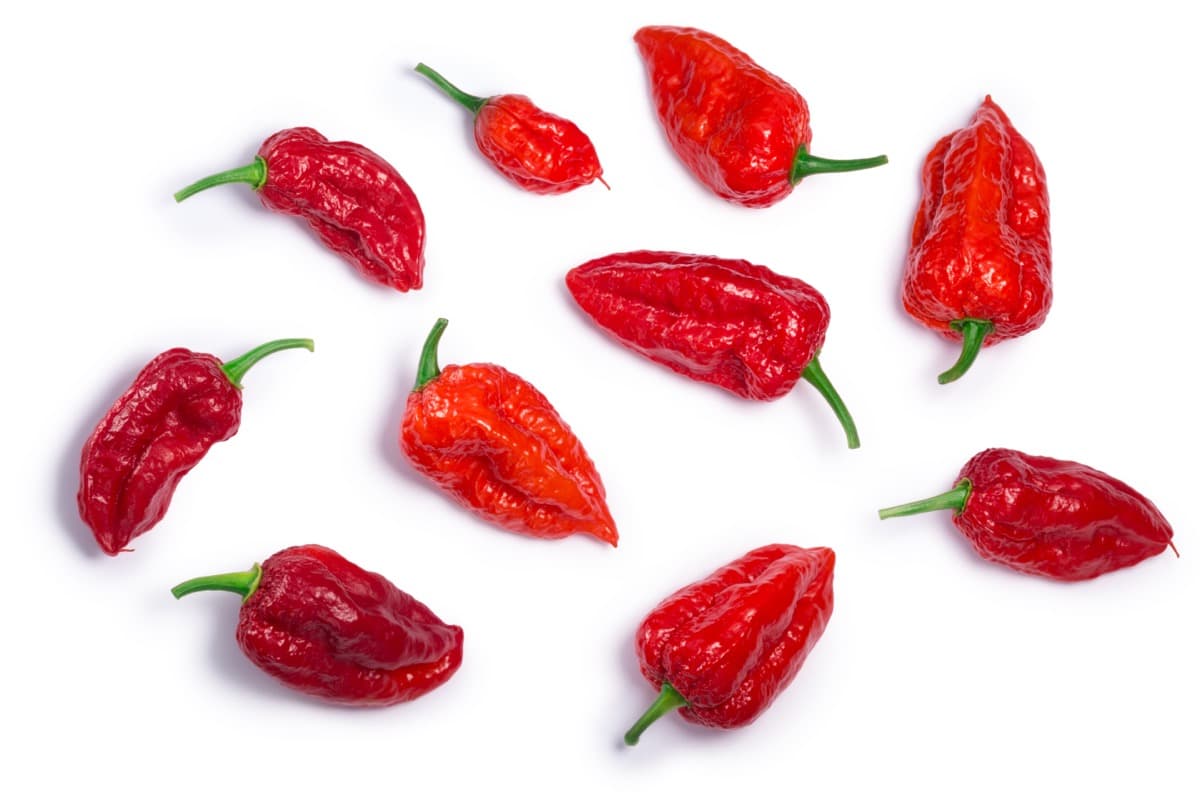
How to Grow Ghost Peppers from Seed
Types of Ghost Peppers
Naga Morich
Naga Morich Peppers are one of the hottest Peppers in the world. If you want to try growing these Peppers at home, there are a few things you need to know. Naga Morich Peppers need a lot of heat and sunlight to grow well. They prefer soil that is sandy and well-drained. It is important to water them regularly, but do not overwater them.
Nagabon
Nagabon Peppers are one of the hottest Peppers in the world, perfect for growing at home. These Peppers pack a serious punch and add some heat to your cooking. If you’re looking for a Pepper that spices things up, you must try growing Nagabon Peppers.
Climate Suitable for growing Ghost Peppers from Seeds at Home
If you want to grow your Ghost Peppers, you’ll need to consider a few things. They thrive in warm climates and need at least six hours of direct sunlight daily. So, if you’re growing them in a pot or raised bed, ensure they’re in a sunny spot. Providing them with plenty of sunlight is important to grow Ghost Peppers from seed successfully. If you are growing them indoors, place them near a south-facing window. If you are growing them outdoors, choose a spot in your garden that gets full sun all day.
Soil Requirement for Growing Ghost Peppers from Seeds at Home
You’ll need to start with a good quality potting mix or raised bed soil to grow Ghost Peppers from seed. The soil should be well-drained and rich in organic matter. If you’re using a pot, ensure it has drainage holes in the bottom. You can either start your seeds indoors or outdoors. If you start them indoors, transplant them into larger pots or raised beds when they’re big enough to handle.
In case you missed it: Best Tips for Making Pepper Plants Hotter: Great Ideas for Beginners
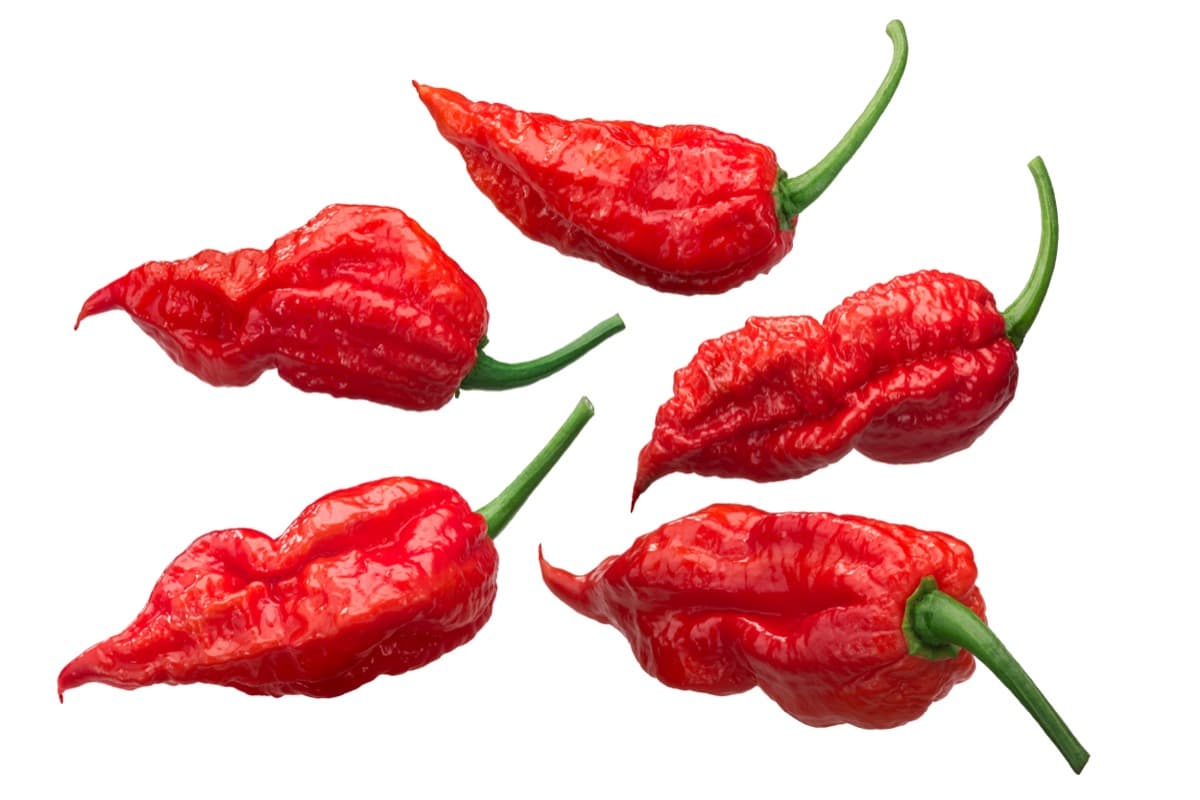
If you start them outdoors, plant them in an area with full sun and good drainage. Ghost Peppers need warm temperatures to germinate and grow, so ensure the soil is warm before planting your seeds. You can either wait until springtime or use a heat mat to warm the soil. Once the seeds have germinated, keep the soil moist but not wet. Allow the top inch of soil to dry out between watering.
Water Requirement for Growing Ghost Peppers from Seeds at Home
The water requirement for growing Ghost Peppers from seed at home is pretty simple. If you’re growing your Ghost Peppers in pots, water them regularly and keep the soil moist but not soggy. Ghost Peppers like well-drained soil, so drain holes in the bottom of your pots. If you’re growing Ghost Peppers from seed at home, you must ensure they have plenty of water. Ghost Peppers are native to tropical and subtropical regions and need much moisture to thrive.
When watering your ghost Pepper plants, always check the soil first to see if it’s dry. If it is, water deeply and evenly until the soil is moistened all the way through. Ghost Peppers also benefit from regular misting or humidity trays. If you live in a particularly dry climate, these will help keep your plants healthy and prevent them from drying out. If you’re growing your Ghost Peppers in raised beds or on a terrace, water them regularly and deeply. Ghost Peppers like their roots to be wet, so give them plenty of water.
Container Size Required for Growing Ghost Peppers at Home
A 12-inch pot is a minimum size you’ll need for pot-grown Ghost Peppers. Once you’ve determined the right container size, it’s time to fill it with the right amount of soil. Fill the pot with 2/3 peat moss and 1/3 perlite for pot-grown Ghost Peppers.
Germinating Ghost Pepper Seeds in Pots
It is surprisingly easy to grow Ghost Peppers from seed. Soak the Ghost Pepper seeds in water for 24 hours. This will help them to germinate faster. You should fill a pot with a well-draining potting mix. Wet the mix until it is evenly moist but not soggy. Sow the seeds on the surface of the potting mix and lightly cover them with more mix. Place the pot in a warm spot and keep the mix moist. The seeds should germinate within 7-14 days.
To germinate ghost Pepper seeds, the ideal temperature is between 20 to 30°C. The seedlings must also be kept moist, but not too wet, during this time. Once the seedlings have emerged, thin them out so that only the strongest plants remain. Transplant the others into individual pots outdoors. Grow the seedlings under bright, indirect light and keep them moist but not wet until they are ready to be transplanted into their final growing position.
In case you missed it: Best and Worst Companion Plants for Peppers – A Full Guide
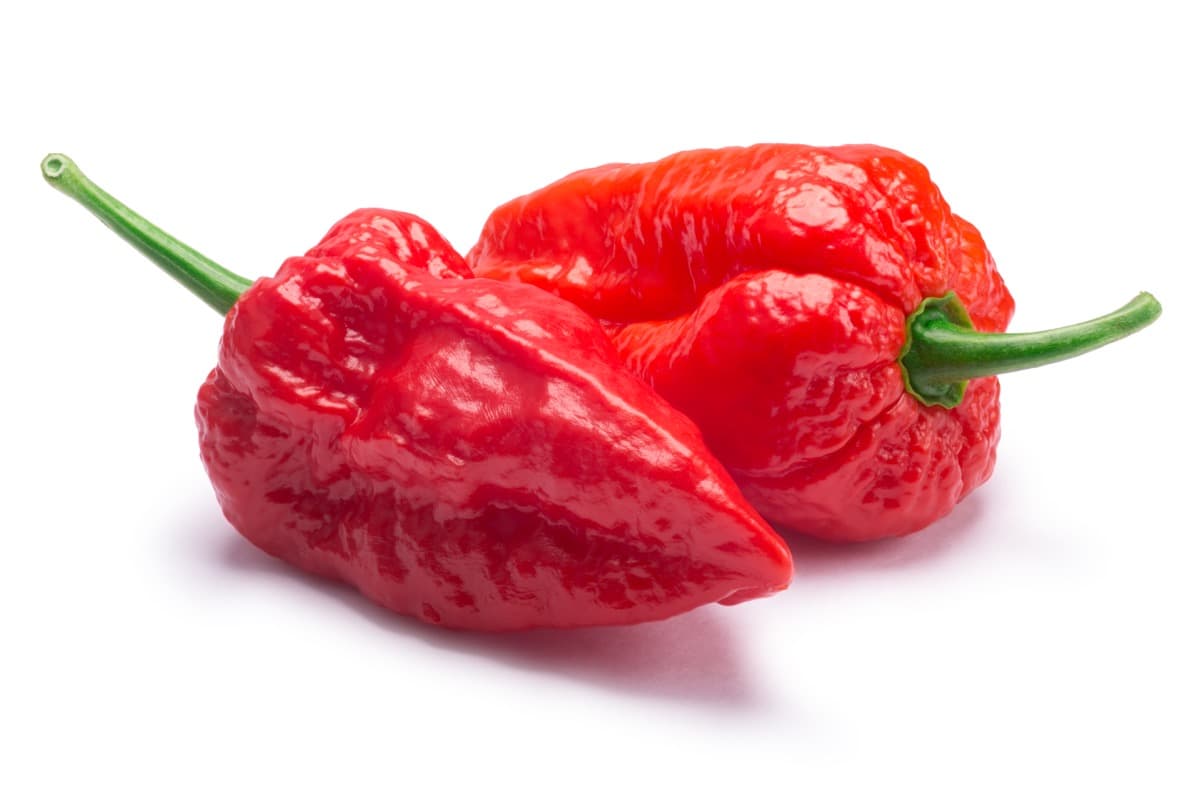
Planting Ghost Pepper Seeds in The Backyard
Ghost Peppers prefer well-drained soil that is high in organic matter. If you’re unsure about the quality of your soil, you can always amend it with some compost or other organic matter. Once your soil is ready, it’s time to sow your seeds. Sow your ghost Pepper seeds ½ inch deep in groups of three or four.
Once planted, water them well and keep the soil moist until they germinate. This usually takes about two weeks. Once your seedlings have emerged, thin them out so that only the strongest plants remain. With proper care, your ghost Pepper plants will thrive and produce plenty of fiery hot Peppers to enjoy.
Ghost Pepper Plant Care
Fertilizer Requirement for Growing Ghost Peppers from Seeds At Home
Peppers are sensitive to light, temperature, water, and fertility. One of the most common problems when growing Peppers, especially from seed, is inadequate fertility. Peppers are heavy feeders and require a lot of nutrients to produce a good crop. If you are growing your Peppers in pots or raised beds, you must fertilize them more often than growing them in the ground.
A good rule of thumb is to fertilize your Peppers once a week with a half-strength solution of a water-soluble fertilizer. Be sure to use a fertilizer high in nitrogen to promote lush growth. Once the Peppers begin to flower, you can switch to a fertilizer higher in phosphorus, encouraging flowering and fruit production.
Pruning Ghost Pepper Plant
Pruning ghost Pepper plants are an important part of their care. It helps to encourage new growth and also keeps the plant healthy by removing dead or dying leaves or stems. You should prune the ghost Peppers in early spring before new growth begins. Remove dead or dying stems to prune your ghost Pepper plant.
Cut these away at the base, careful not to damage the plant’s main stem. Next, trim back any long or overgrown branches, cutting them back to a length of about 6-8 inches. Finally, give the plant a general shape, trimming away stray leaves or branches.
Ghost Pepper Plant Care in Winter
When the temperatures drop and the days get shorter, you’ll need to take special care of your ghost Pepper plants to ensure they survive the winter. If you live where the temperature gets below freezing, bringing your ghost Pepper plants inside for the winter is best. Place them in a sunny spot near a window and water them as usual.
In case you missed it: Growing Peppers from Seed to Harvest: For Bell Peppers, Chilli Peppers, Spicy/Hot Peppers, Sweet Peppers, and Jalapeno Peppers
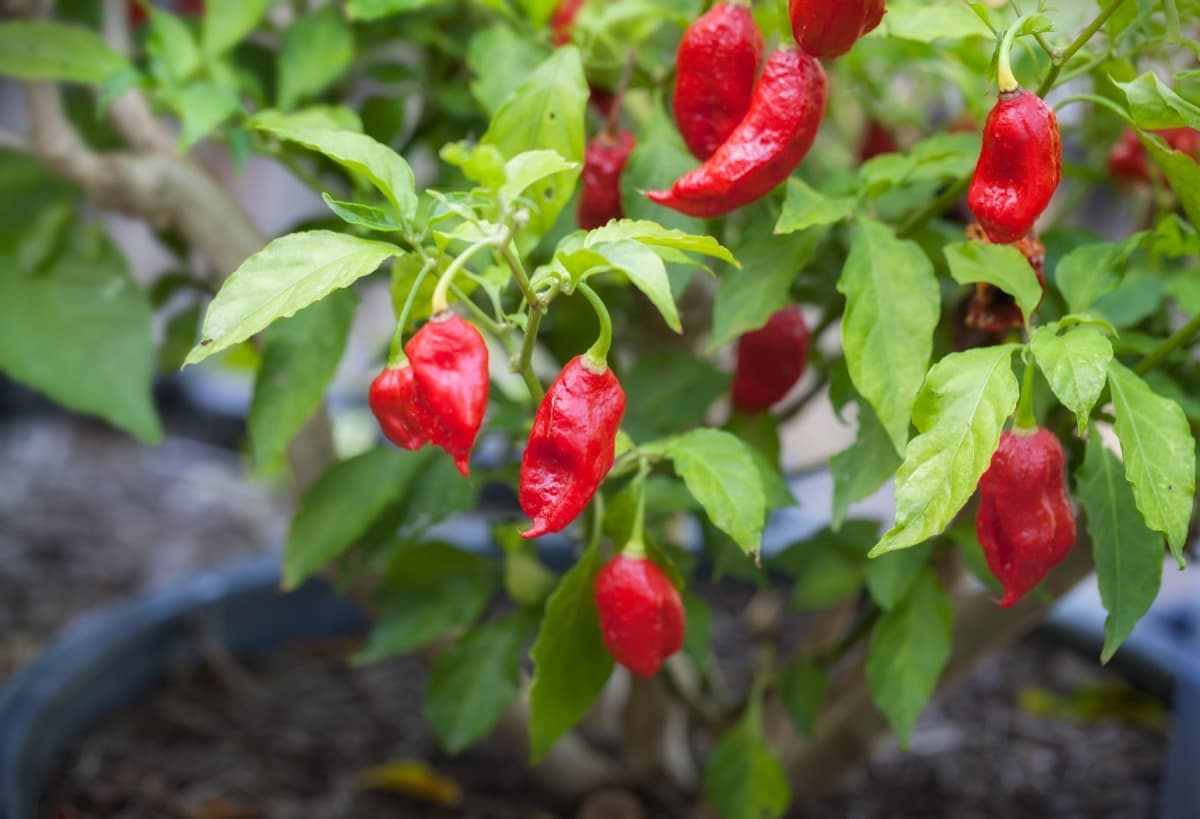
If you can’t bring your plants inside, protect them from frost by covering them with a frost blanket or something similar. Water your plants less often during winter, as they won’t need as much water to survive. Allow the soil to dry out completely before watering again.
Tips to Stake or Cage Ghost Peppers
If you’re growing Ghost Peppers, you must stake or cage them to support the plant. Staking is preferred, but you can use a cage if you have nothing to stake the plant with. Drive a stake into the ground near the ghost Pepper plant. Make sure the stake is at least 2 feet tall. Tie the plant’s main stem to the stake with garden ties or twine. Be sure to leave some slack so the plant can grow and move in the wind. If you’re using a cage, place it around the plant and secure it to the ground with stakes or rocks.
Pests and Diseases of Ghost Peppers and Their Control
Pests are a big problem when it comes to growing Ghost Peppers. Aphids are small insects that can cause new growth to deform and become yellow. They also produce a sticky substance called honeydew that can attract other pests, like ants. To control aphids, you can use a hose to blast them off your plants or apply insecticidal soap. Tomato hornworms’ large caterpillars can strip a plant of its leaves in no time.
If you see any hornworms on your plants, handpick them off and kill them. Slugs and Snail pests love to munch on ghost Pepper leaves. You can set out traps baited with beer or handpick them off your plants to control them. While Ghost Peppers are generally considered to be very healthy, there are a few diseases that can affect them.
Powdery mildew fungal disease affects Ghost Peppers that are grown in humid conditions. The fungus appears as white powder on the leaves and stems of the plant. Left unchecked, it can kill the plant. Water your plants early in the day to control powdery mildew so they have time to dry off before nightfall. Avoid overhead watering, and remove any infected leaves from the plant.
In case you missed it: Best Season to Grow Bell Pepper/Capsicum at Home in India: in Pots, Terrace, Apartment Balcony, and Backyards
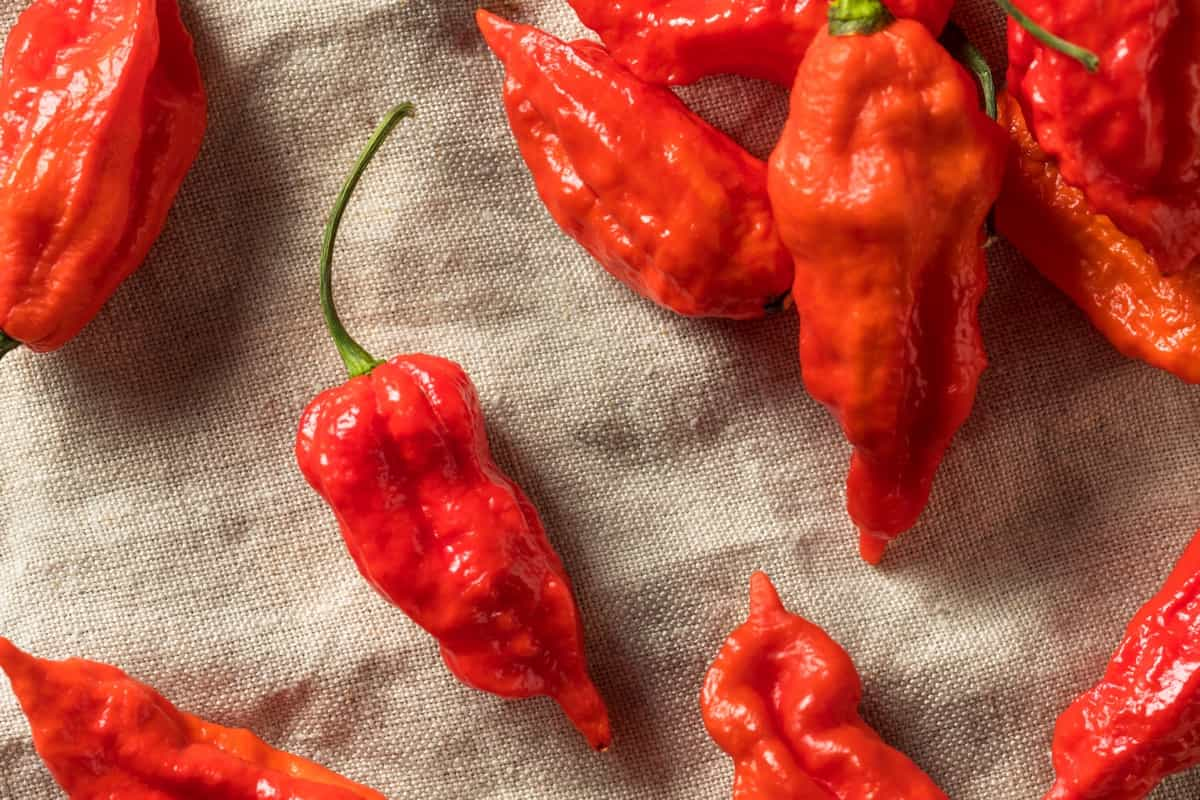
Bacterial leaf spot disease causes small brown or black spots on ghost Pepper plants’ leaves. The spots may eventually kill the leaf. Bacterial leaf spot is often caused by overwatering or splashing water on the leaves when watering the plants. To control this disease, water your plants from below (such as with a drip system) to avoid wetting the leaves. If you get water on the leaves, dry them immediately. Remove any infected leaves from the plant.
Harvesting Ghost Peppers
The ghost Pepper can be harvested at any time during its growing season. The Peppers will turn red when they are ripe. Cut the stem just above the point where the Pepper attaches to it to harvest. Be careful not to touch your face or eyes after handling the Peppers, as they irritate. Once harvested, the Peppers can be preserved in several ways.
Conclusion
Growing Ghost Peppers can be a rewarding and delicious experience. Growing Ghost Peppers successfully could be a rewarding experience for any gardener. Following the necessary steps and guidelines, such as germinating the seeds before planting them and providing the plants with enough care and attention, you can enjoy your homegrown Ghost Peppers from home.
In case you missed it: 17 Common Pepper/Chili Plant Problems: How to Fix Them, Solutions, and Treatment
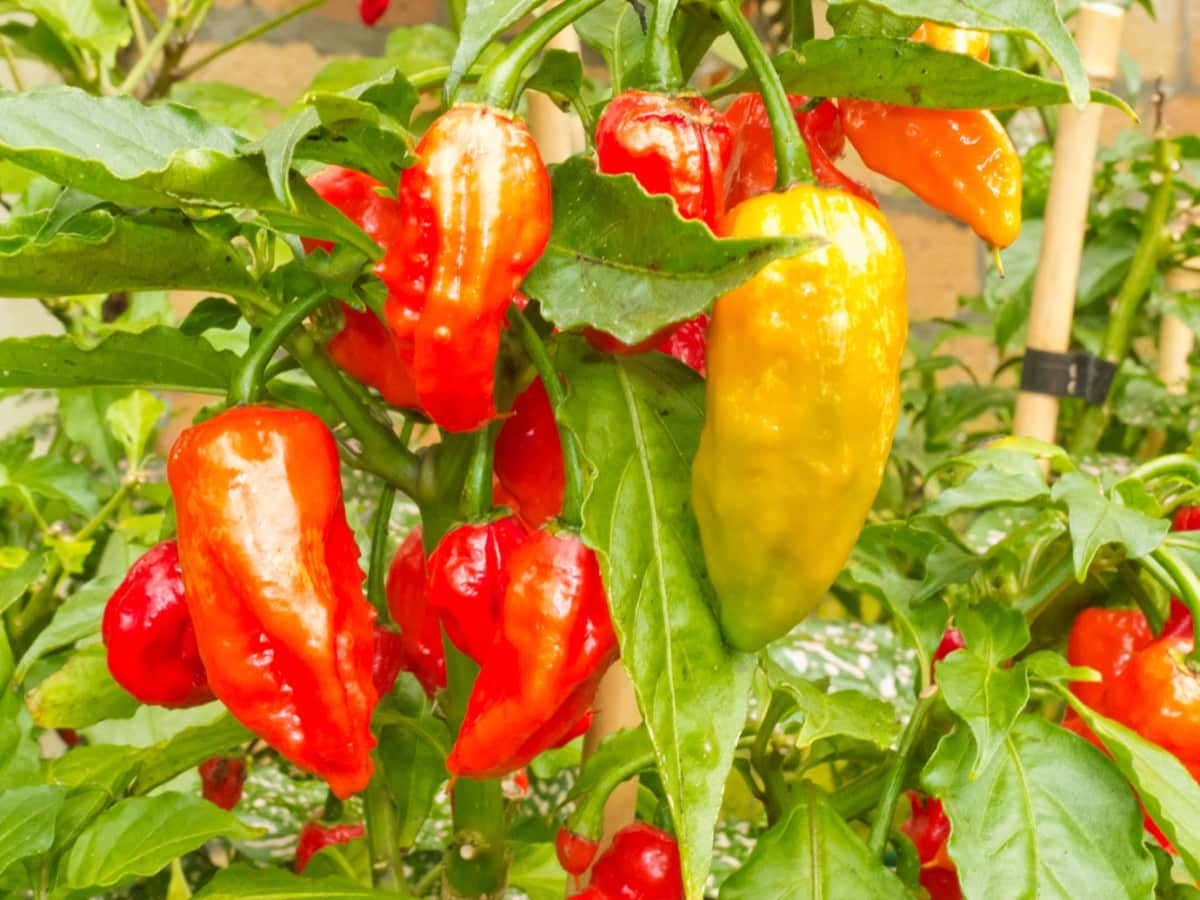
Additionally, grow them in appropriate containers, terraces, or raised beds depending on your needs. With a little bit of gardening know-how and patience, growing delicious Ghost Peppers can be an easy task.
- How to Grow Tomatoes Organically at Home: A Comprehensive Guide
- Organic Gardening on a Budget: Low-Cost Methods and Materials
- Gongura Seed Germination and Planting Methods
- Cabbage Seed Germination and Selection
- Broccoli Seed Germination and Selection
- Asparagus Seed Germination and Variety Selection
- Seasonal Flower Gardening: Best Practices for Spring, Summer, Fall, and Winter
- How to Grow Hibiscus from Flower
- Plantation Ideas for Home Decoration: A Beginners Guide
- Flower Garden Designs and Layouts for Beginners
- Planting and Spacing Techniques in Papaya: A Beginner’s Guide
- Growing Gold: Essential Techniques for Planting Pineapples
- How to Make Kalanchoe Plant Bushy: Home Remedies and Solutions
- 11 Reasons Why Your Gardenia is Not Blooming: Home Remedies and Solutions
- Eco Elegance: The Guide to Designing a Drought-Tolerant Landscape
- Gardening on a Slope: Strategies for Hillside Landscaping
- Nourish and Flourish: Top Organic Mulches for Thriving House Plants
- Everything You Want to Know about Indian Mogra Flower: Discover Uses and Growing
- Green Thumb Success: Expert Tips for Cultivating Greenhouse Pumpkins All Year Round
- Maximize Growth & Flavor: The Ultimate Guide to Companion Planting in Herb Gardens
- How to Control Rhododendron Problems Naturally: Home Remedies and Organic Ways to Fix Them
- Natural Magic: The Remarkable Benefits of Cinnamon for Plants
- Best Steps to Revive Dying Tulip with Natural and Organic Treatment
- 10 Reasons Why Your Angel Trumpet is Not Blooming: Remedies and Treatment
- How to Fix Periwinkle Leaf and Flower-Related Problems: Natural Remedies and Solutions
- How to Fix Zinnias Leaf and Flower Problems: Discover Natural and Home Remedies
- Organic Steps to Induce Lemon Tree Flowers: A Comprehensive Guide
- Bloom Booster: Crafting the Perfect Homemade Bougainvillea Fertilizer
- Optimizing Growth: A Guide to Applying NPK Fertilizer for Potted Plants
- 10 Best Homemade Fertilizers for Rubber Plant: DIY Recipes and Application Method
- How to Boost Female Pumpkin Flowers: Effective Steps for More Flowers and High Yields
- Transform Your Indoor Garden: Top Benefits of Pink Salt for Houseplants
- 10 Best Homemade Fertilizers for Peacock Plants (Calathea): Easy DIY Guide
- Unlock Blooms: 9 Reasons Why Your Potted Chrysanthemum is Not Blooming
- 8 Reasons Why Your Potted Hibiscus is Not Blooming: Fix it with Simple Solutions
- Unlock Blooms: 9 Key Reasons Your Potted Frangipani Won’t Flower